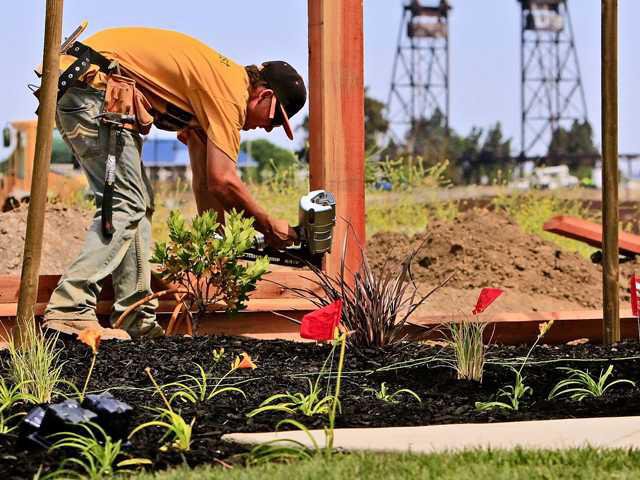River Islands at Lathrop is on pace to build nearly 400 homes this year.
Thirty families have moved into new homes as if the end of 2014 as the first residents of the planned community of 10,800 homes.
Three builders sold 86 homes and have started building 200 homes as 2014 drew to a close. Building started in earnest in August.
Cambay Group in July projected 90 homes would be built or started in 2013 with 250 homes breaking ground in 2015. Then in 2016 the target is for 500 homes with production expected to continue at that level in subsequent years.
If the pace continues, home building will exceed earlier projections.
“The interest is incredible,” Cambay Project Manager Susan Dell’Osso said in reference to traffic at model homes and the visitor’s center.
That means River Islands by itself could eclipse Manteca as the fastest growing city in San Joaquin County when it comes to new homes being built. Manteca has been leading the county with an average of 300 housing units a year since 2008. There are a lot of draws for the 4,800-acre planned community. They include:
Universal river access via a linear park along the edge of 14 miles of San Joaquin River and delta habitat. That’s in addition to 400 acres of lakes within River Islands.
A park of some type within a quarter of a mile of every home in River Islands. The first interior park being built will have soccer fields, extensive tree plantings and a wide expanse of steps leading down to the water’s edge of a lake. It is being named Michael Vega Park in honor of the first Lathrop resident killed in the Global War on Terror.
Service by an independent district that will provide electricity at rates ultimately 25 percent below what PG&E charges.
Water sensors built into front yard landscaping
Public schools designed with cutting edge 21st century education in mind including one campus that was built and up and running well in advance of the first home even being sold — a rarity in California.
A plan to make the community the Central Valley’s first transit community as Cambay Group is working on a plan that would put an Altamont Corridor Express station adjacent to the development’s employment center on a proposed route that would ultimately serve as a connector for high speed rail service.
A plan to finance future maintenance costs for the community that caps all taxes at 1.8 percent of a property’s value. That includes the base one percent property tax that is collected on all California homes now. The cap contrasts with other nearby developments where Mello-Roos taxes have risen to 3 percent of value and more as property values declined.
An in-place purple pipe system that will use river road and treated wastewater to irrigate common landscaping — most of which is low water use — and parks. Given the water table and proximity of the river it would fairly quickly cycle itself back to the river.
License plate scanners will be placed at all four bridges that ultimately will serve as the only access to River islands to alert authorities of stolen vehicles. Security will be further enhanced by other cameras throughout the 4,800-acre planned community will monitor a stolen vehicle’s progress along streets as officers respond.
A marketing director will be hired not to sell homes but to organize community activities ranging from Fourth of July celebrations complete with parades to farmers markets.
That’s the short list of things River Islands — a development 28 years in the making — offers potential residents.
Ultimately River Islands will have 10,800 homes in the form of single family houses, apartments, condos and even condos above restaurants and stores in the future town center.
The higher density housing such as apartments and condos will surround high use community areas such as schools.
Streets are being kept narrow to de-emphasis vehicles and slow traffic down. And instead of deploying traffic signals, most intersections where traffic volume is higher will have roundabouts.
No sidewalks will abut streets. Instead there will be landscaped mow strips between the curb and sidewalks.
Long-term upkeep and maintaining standards aren’t being left to chance. Areas that traditionally are neglected in a neighborhood such as corners and other spots will not be sold with lots. Instead they will be kept in control of the community for common area maintenance and upkeep.
Adequate water for the development of the entire project has been secured.
The entire community has the highest level of flood protection possible — levees designed to withstand 200 year event.
They are the most secure levees of their type in the nation.
River Islands: 400 homes on 2014?
Sales, construction strong for planned community





